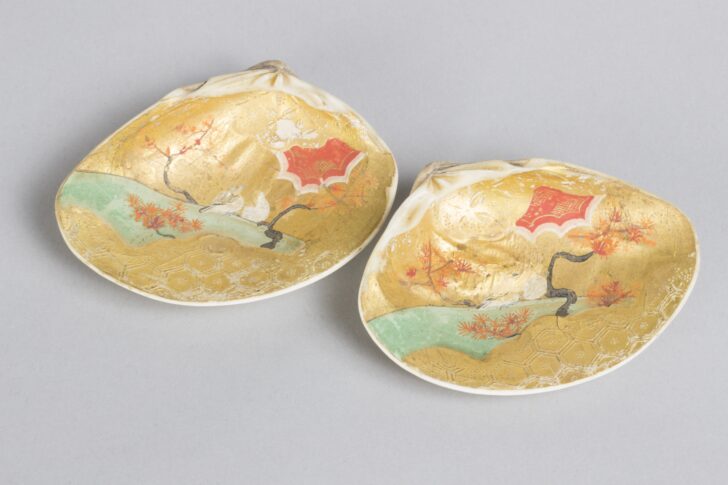Set of Kaiawase (Shell Game)
Japanese

Description
Set of kaiawase (Shell game)
Japan
Edo period (1615–1868)
19th century
Color and gold on shells
Museum purchase made possible
by the University of Michigan
Center for Japanese Studies,
2015/1.378A&B–381A&B
Kaiawase is a shell matching game originally
played by court ladies during the Heian period
(794–1185) and later by women of the aristocratic,
military, and wealthy merchant classes. This set
features scenes from The Tale of Genji, and players
would have been expected to recognize each of
the scenes. The object was to match the pairs,
relying on the natural pattern of the outer shell to
identify the correct match. Once matched, players
would turn over the shell to reveal intricately
painted narrative episodes from the novel.
If the scenes matched, the player gained a point.
As each shell had only one match, kaiawase
became a symbol of perfect matrimonial union; in
turn, it alluded to female chastity. For this reason
a kaiawase set was a significant part of an upper-
class woman’s bridal trousseau.
Summer 2024 Gallery Rotation
____________________
Kaiawase was a shell matching game originally played by court ladies during the Heian period (794–1185) and later by women of the aristocratic, military, and wealthy merchant classes. There are other awase games that involve matching and joining things such as poetry or pictures, but kaiawase was played to match pairs of painted clam shells. A full set of the game contained 360 pairs of shells, all approximately the same size. The outside of the shell was left in its natural state, but the inside was cleaned, gilded, and painted. Each pair was decorated with an image inspired by classical literature, from flowers to noblemen. To play, the left half of the shells were spread out on the floor and the right half were drawn one at a time from the box in which they were housed. The winner of the game was the one who could make the most pairs.
Because a shell had only one match, kaiawase became a symbol of the perfect union of a husband and wife; in turn, it alluded to female chastity. For this reason a kaiawase set was a significant part of the bridal trousseau of an upper class woman.
Subject Matter:
During the Heian period (794-1185), Kaiawase --a shell matching game-- was originally played among court ladies and later by aristocratic, military, and wealthy merchant-class women. This set depicts scenes from The Tale of Genji, which players would have to recognize to properly match the pairs. Kaiawase was viewed as a symbol of perfect matrimonial union since each shell had only one match, thus, the shells were treasured belongings of brides.
Usage Rights:
If you are interested in using an image for a publication, please visit https://umma.umich.edu/request-image/ for more information and to fill out the online Image Rights and Reproductions Request Form.